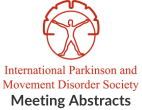Smell and Taste in Blepharospasm
Objective: To contribute to the better understanding of blepharospasm, we systematically assess olfactory and gustatory ability in subjects with blepharospasm, compared to subjects with cervical…PKAN is associated with significant peripheral metabolic alterations in the Dominican Republic cohort
Objective: Applying segmental bioimpedance testing to assess peripheral metabolic alterations in PKAN. Background: PKAN is a rare autosomal recessive disorder with >50 different mutations in…Exploring the pathophysiology of acquired dystonia by the use of high frequency somatosensory stimulation
Objective: To explore the effect of high-frequency repetitive sensory stimulation (HF-RSS) on the excitability of the sensorimotor cortex in acquired dystonia Background: Dystonia is currently…Tremor-dominant cervical dystonia and the cerebellum: lessons from saccade adaptation
Objective: To evaluate the role of the cerebellum in tremor-dominant cervical dystonia (CD) using a standardized saccade adaptation task. Background: While basal ganglia has long…Abnormal Sensorimotor Processing in Cervical Dystonia in Functional Magnetic Resonance Imaging
Objective: The aim of this study was to assess brain activation during voluntary sequential finger tapping in cervical dystonia patients while manipulating task complexity. Background: Cervical dystonia…Defective human motion perception in cervical dystonia correlates with coexisting tremor
Objective: To evaluate whether perceptual encoding of body motion in cervical dystonia (CD) is associated with co-existing tremor. Background: Patients with focal CD or hand…Interactions within Fine Motor Control Network in Task-specific Dystonia
Objective: Using a novel methodology combining neuroimaging and transcranial magnetic stimulation(TMS), we explored the difference in the interactions between the principal nodes of the fine…Evaluating Multimodal Integration of Abnormalities in Adult Onset Idiopathic Focal Dystonia (AOIFD) via Multivariate Pattern Analysis (MVPA) and Ensemble Learning (EL)
Objective: Investigate MVPA and EL for understanding the relationship between structural and functional abnormalities in AOIFD. Background: AOIFD is a movement disorder with diverse phenotypes…Trust the Patient’s Report, not the Doctor’s: Non-Motor Symptoms and Quality of Life in Cervical Dystonia
Objective: To assess the prevalence of mood disorder and measure health-related quality of life (Hr-QoL) in relation to, pain, disability and disease severity in cervical…A software framework for objective and quantitative audio-analysis of Embouchure Dystonia (ED)
Objective: Development of an automated audio-analysis software framework for aiding in biomarker identification to objectively quantify ED severity. Background: ED, the second most common phenotype…
- « Previous Page
- 1
- …
- 7
- 8
- 9
- 10
- 11
- …
- 17
- Next Page »
